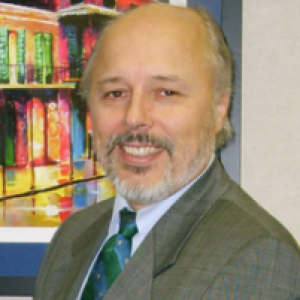Prescott Deininger
Director, Tulane Cancer Center, The Joe W. and Dorothy Dorsett Brown Foundation Chair in Oncology

Areas of Expertise
Biography
In 1981, Dr. Deininger took a faculty position in Biochemistry and Molecular Biology at LSU Medical Center where he reached the rank of professor in 1990. He spent a year on sabbatical in 1989 with Dr. Charles Stiles at the Dana Farber Cancer Institute and Harvard School of Medicine. He also served as the Founding Director of the Laboratory of Molecular genetics at the Ochsner Medical Foundation.
The primary theme of his research is genetic instability in the human genome. This is not only a critical issue in carcinogenesis, but also in a number of genetic disorders. Dr. Deininger's laboratory has carried out extensive analysis of the mobile elements in the human genome to understand their mechanism of spread throughout the human genome. The lab is continuing to study the mechanism of mobile element amplification in the human genome and its impacts in human disease. They have identified proteins that interact with SINE RNA molecules and are therefore likely to participate in the amplification process. Ongoing studies are also being conducted on the impact of mobile elements on human genome diversity and also making assessments of their influence in carcinogenesis. In addition, in collaboration with Dr. Keats at LSUHSC, research is being done to study the triplet repeat instability associated with Freidreich's Ataxia, and a minisatellite repeat that is associated with Ushers Syndrome. Both of these diseases affect the Acadian population at a higher than normal rate. More recently, his laboratory has expanded studies into the genetic and environmental contributions to the instabilities associated with human repetitive elements. This includes studies into the influence of genotoxins on recombination between Alu elements that will contribute to genomic deletions and amplifications. In collaboration with Xavier investigators, the laboratory is looking at both the genetic and environmental influences on both insertional mutagenesis of mobile elements and the genetic influences on recombination between Alu elements.
Articles
Comparative analysis on the expression of L1 loci using various RNA-Seq preparations
2020
Background: Retrotransposons are one of the oldest evolutionary forces shaping mammalian genomes, with the ability to mobilize from one genomic location to another. This mobilization is also a significant factor in human disease. The only autonomous human retroelement, L1, has propagated to make up 17% of the human genome, accumulating over 500,000 copies. The majority of these loci are truncated or defective with only a few reported to remain capable of retrotransposition.
Alu elements: know the SINEs
2011
Alu elements are primate-specific repeats and comprise 11% of the human genome. They have wide-ranging influences on gene expression. Their contribution to genome evolution, gene regulation and disease is reviewed.
Somatic expression of LINE-1 elements in human tissues
2010
LINE-1 expression damages host DNA via insertions and endonuclease-dependent DNA double-strand breaks (DSBs) that are highly toxic and mutagenic. The predominant tissue of LINE-1 expression has been considered to be the germ line. We show that both full-length and processed L1 transcripts are widespread in human somatic tissues and transformed cells, with significant variation in both L1 expression and L1 mRNA processing.

